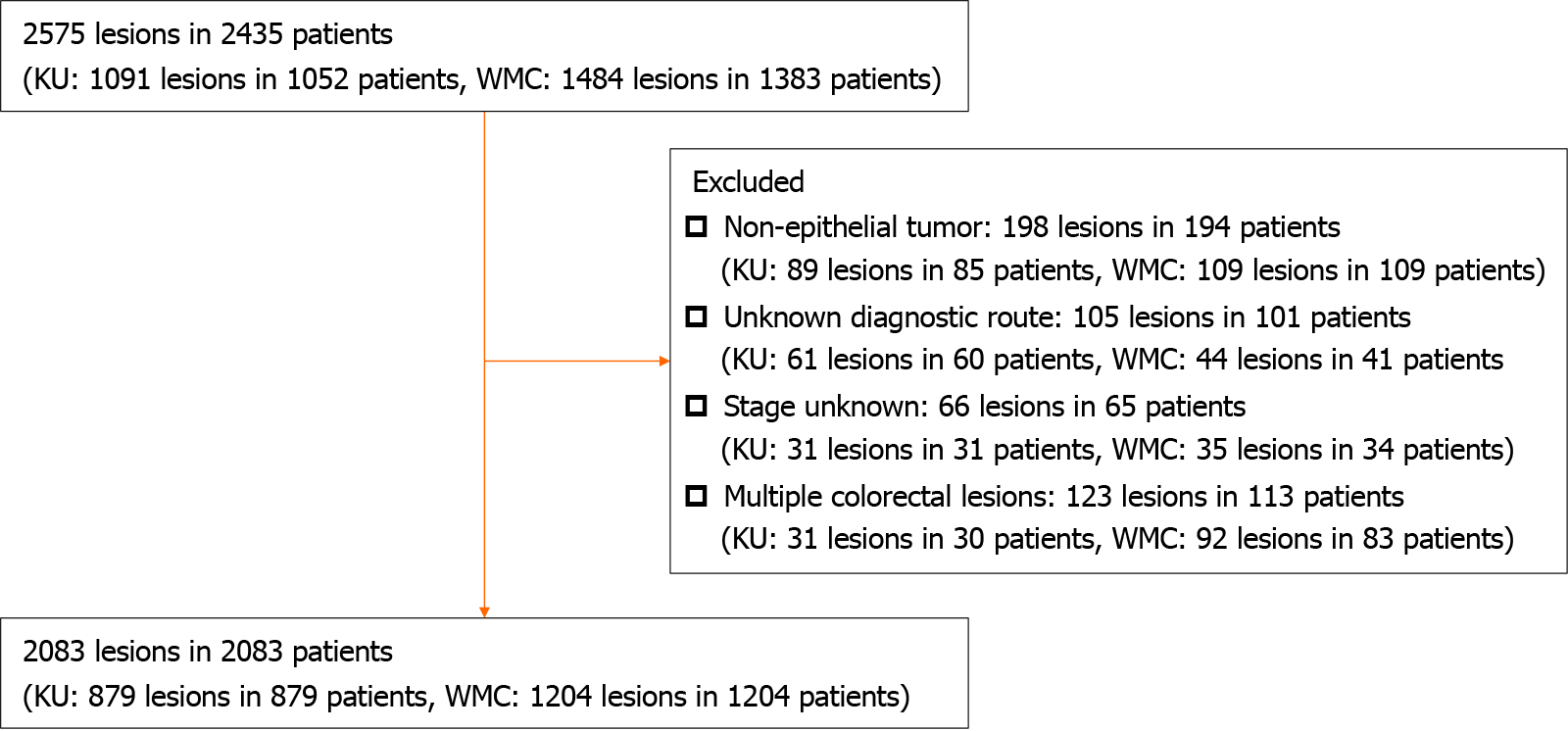Copyright
©The Author(s) 2024.
World J Gastroenterol. Mar 14, 2024; 30(10): 1368-1376
Published online Mar 14, 2024. doi: 10.3748/wjg.v30.i10.1368
Published online Mar 14, 2024. doi: 10.3748/wjg.v30.i10.1368
Figure 1 Flow diagram of colorectal lesions and patients from two hospitals.
Between January 2016 and December 2019, cancer registries listed 2575 colorectal lesions in 2435 patients. Of these, 198 non-epithelial tumors in 194 patients were excluded. From the remaining 2377 lesions, 105 lesions in 101 patients with unknown diagnostic routes were excluded. Further, 66 lesions in 65 patients with unknown stages were excluded. Of the remaining 2206 lesions, 123 lesions in 113 patients were identified as synchronous colorectal cancers, and after excluding early-stage lesions, 2083 lesions in 2083 patients remained. KU: Kyoto University Hospital; WMC: Japanese Red Cross Wakayama Medical Center.
- Citation: Agatsuma N, Utsumi T, Nishikawa Y, Horimatsu T, Seta T, Yamashita Y, Tanaka Y, Inoue T, Nakanishi Y, Shimizu T, Ohno M, Fukushima A, Nakayama T, Seno H. Stage at diagnosis of colorectal cancer through diagnostic route: Who should be screened? World J Gastroenterol 2024; 30(10): 1368-1376
- URL: https://www.wjgnet.com/1007-9327/full/v30/i10/1368.htm
- DOI: https://dx.doi.org/10.3748/wjg.v30.i10.1368













